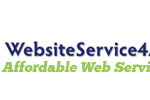 **Title: How do I protect my WordPress admin panel**
**Title: How do I protect my WordPress admin panel**
In the vast world of digital information and online business, securing your website’s backend is crucial. If you’re using WordPress, you might frequently ask yourself, “How do I protect my WordPress admin panel?” This question is essential given the potential threats that could compromise your site’s integrity and user data.
As a starting point, “How do I protect my WordPress admin panel” by ensuring that strong passwords and usernames are in place. Yes, it sounds basic, but the simplicity of this step is crucial for foundational security. Often, brute force attacks on WordPress sites succeed due to weak login credentials. Therefore, when considering “How do I protect my WordPress admin panel,” always use complex passwords and change them regularly.
Moving forward with “How do I protect my WordPress admin panel,” two-factor authentication (2FA) should not be overlooked. By adding an extra layer of security—where a user must provide two different authentication factors—you significantly reduce the risk of unauthorized access.
Moreover, when thinking about “How do I protect my WordPress admin panel,” consider limiting login attempts. Plugins that restrict the number of tries a user has to log in can prevent or deter attackers from successfully accessing your admin area via brute force methods. WebsiteService4All recommends the use of such security plugins as part of your strategy on “How do I protect my WordPress admin panel.”
“WordPress Security” measures also include updating your WordPress version, themes, and plugins. Outdated software can leave your site vulnerable to attacks because they may have unpatched security flaws. Each update generally improves the overall security by fixing bugs and enhancing features. Remember, keeping everything up-to-date is a direct answer to the query, “How do I protect my WordPress admin panel?”
Another excellent tactic in “WordPress Security” is to employ a web application firewall (WAF). This can help filter out malicious traffic before it even reaches your site. A good WAF provides another layer of defense, supporting your efforts on “How do I protect my WordPress admin panel.”
Changing the default WordPress login URL is another effective method regarding “How do I protect my WordPress admin panel.” By doing so, you make it hard for bots and attackers to find the login page in the first place. Many plugins allow easy customization of login URLs, thus simplifying this step in securing your site.
You might also want to implement HTTPS encryption for your site. If you’re asking “How do I protect my WordPress admin panel,” using SSL/TLS certificates is part of the answer. It encrypts data transferred between your visitors’ browser and your server, making it difficult for hackers to intercept sensitive information.
Furthermore, regular backups are crucial in “How do I protect my WordPress admin panel.” Even with all precautions, things can go wrong. Regularly backing up your site ensures that you can restore your site to a functioning state if a security breach occurs.
Another aspect of “How do I protect my WordPress admin panel” includes monitoring and auditing. Use security plugins that offer audit trails and regular scans for any suspicious activity. Monitoring file integrity can also alert you early if something unusual happens within your admin dashboard.
At WebsiteService4All, we understand the importance of answering “How do I protect my WordPress admin panel” comprehensively. We advocate for implementing as many layers of security as possible to safeguard your digital presence effectively.
Lastly, educating yourself and staying informed about new security threats is fundamental when addressing “How do I protect my WordPress admin panel.” Regularly participating in seminars, reading up on latest practices in “WordPress Security,” and subscribing to security newsletters can keep you ahead.
To conclude, the question “How do I protect my WordPress admin panel” incorporates a multifaceted approach involving technical measures and informed practices. Implementing robust security protocols and staying updated on best practices goes a long way in mitigating risks associated with managing a WordPress site.
